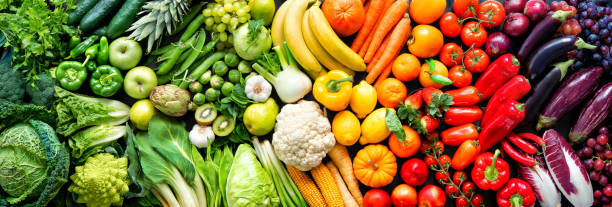Phytonutrients are compounds within plant foods that contribute to their coloring and are part of the plant’s immune defense system. While phytonutrients are not essential to the human body, they are very beneficial because they act as antioxidants and prevent damage to our cells. Phytonutrients work to offset the damage caused by free radicals, which are molecules that damage cells and can lead to various chronic diseases such as cancer, cardiovascular disease, and Alzheimer’s.
Have you ever heard of the phrase, “Eat the rainbow” when it comes to fruits and vegetables? This is because of phytonutrients. Since phytonutrients are a part of the plant’s pigment, fruits and vegetables of the same color group will have the same phytonutrients. By “eating the rainbow”, you not only consume a variety of vitamins and minerals but phytonutrients too!
The USDA MyPlate recommends consuming 2 cups of fruit and 2.5 cups of veggies per day based on a 2,000-calorie diet. Choosing fruits and vegetables of different colors is the easiest way to ensure you are consuming a variety of phytonutrients to promote overall health and well-being.
Phytonutrients by Color
Here are the various phytonutrients associated with their colors:
- Red plant foods such as strawberries, tomatoes, and watermelon contain lycopene
- Orange and yellow plant foods such as oranges, bananas, and winter squash contain beta cryptothanxin
- Green plant foods such as broccoli, spinach, and various herbs contain sulforaphane, isothiocyanates, and insoles
- Blue and purple plant foods such as blueberries, eggplant, and red cabbage contain anthocyanins
- White and brown plant foods such as onions, cauliflower, and mushrooms contain allicin
Looking for a phytonutrient rich meal? Check out the Whole Grains and Greens Salad recipe from Click ‘n Cook!
Written by:
Isabella Ferretti
Dietetic Intern


